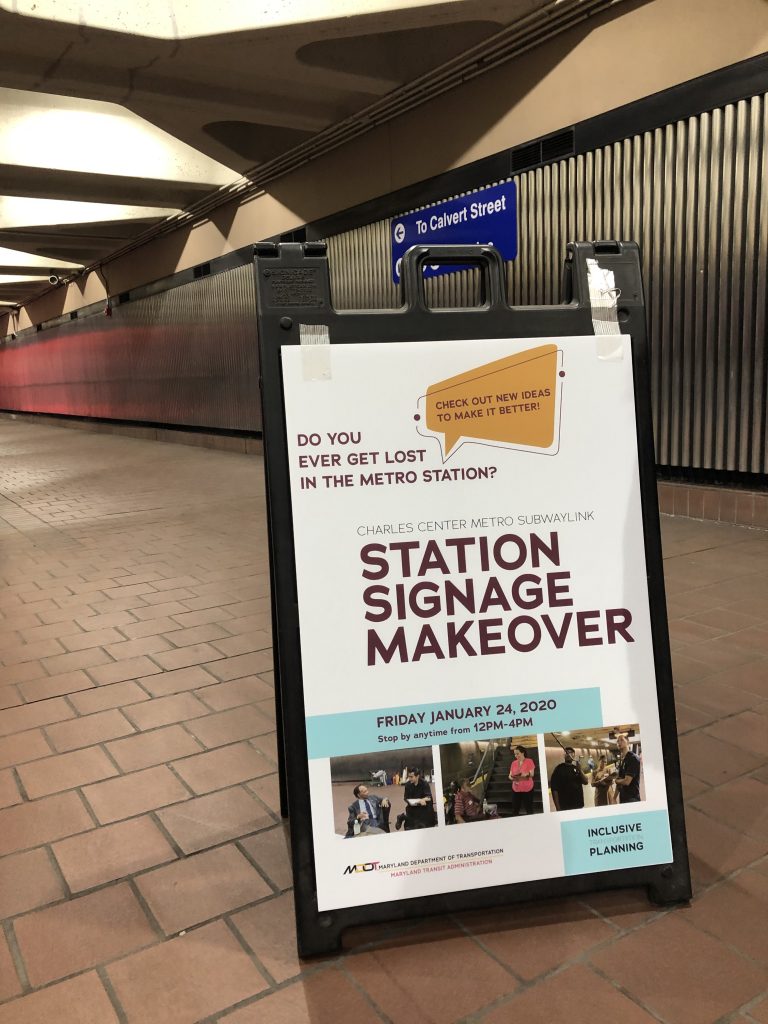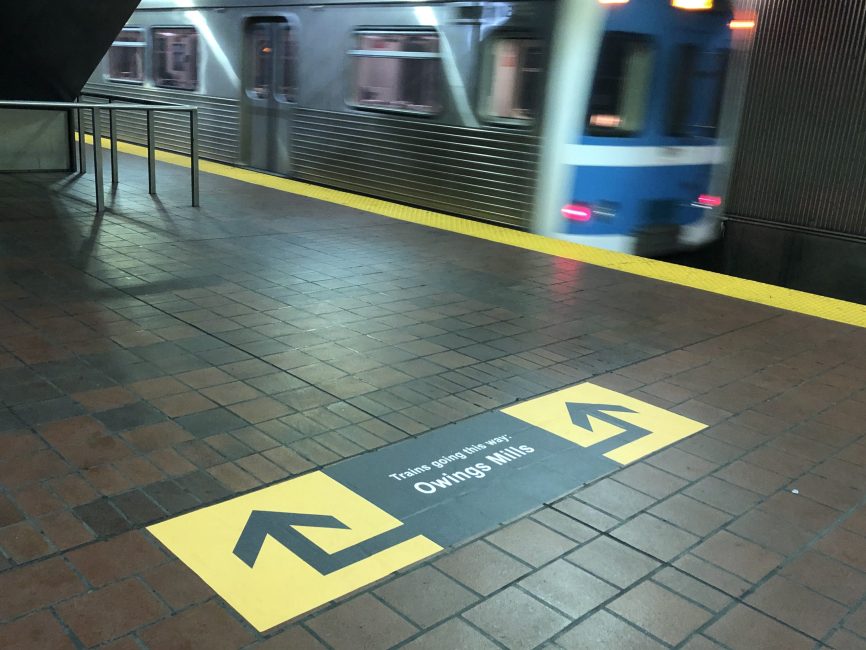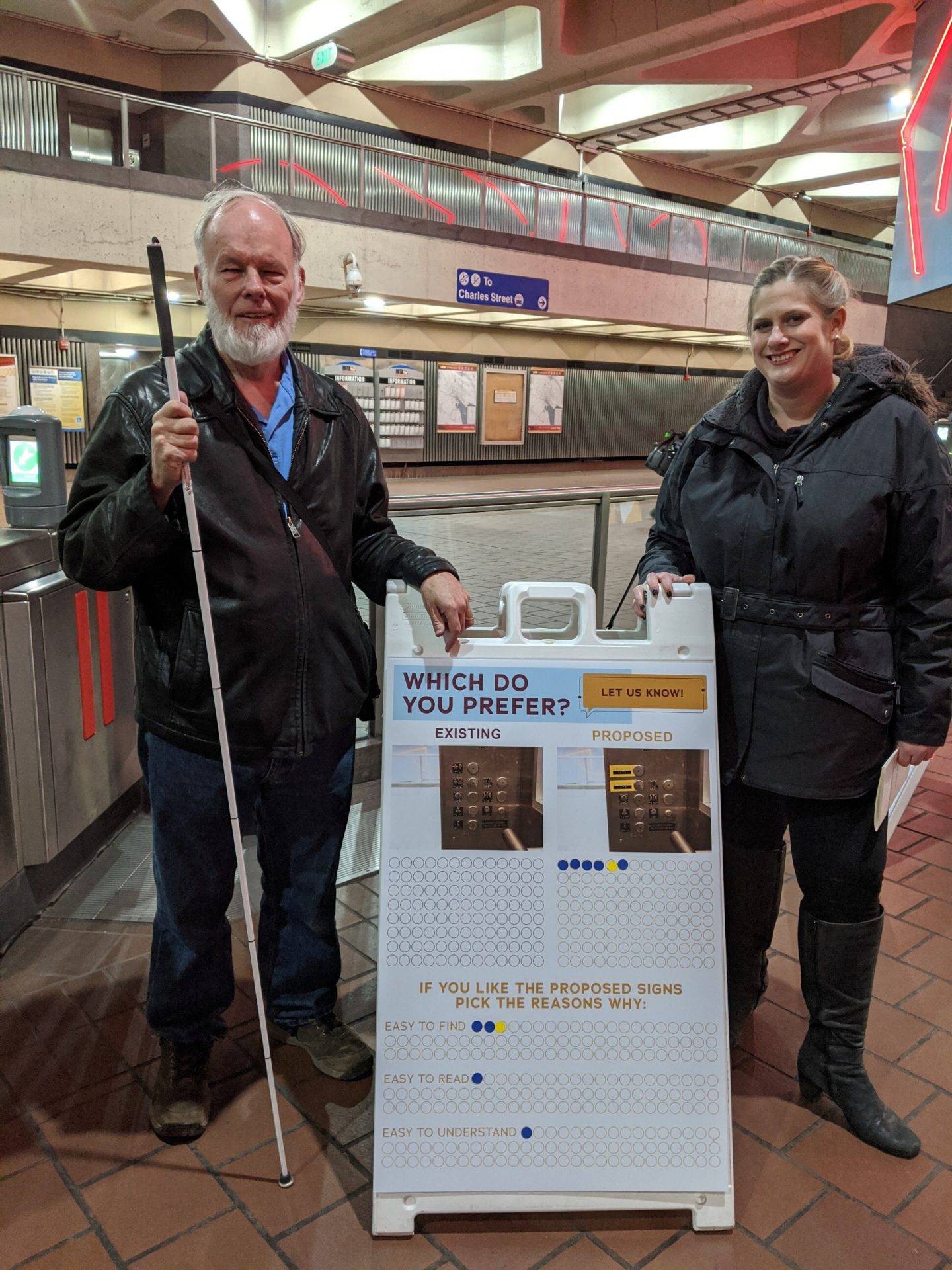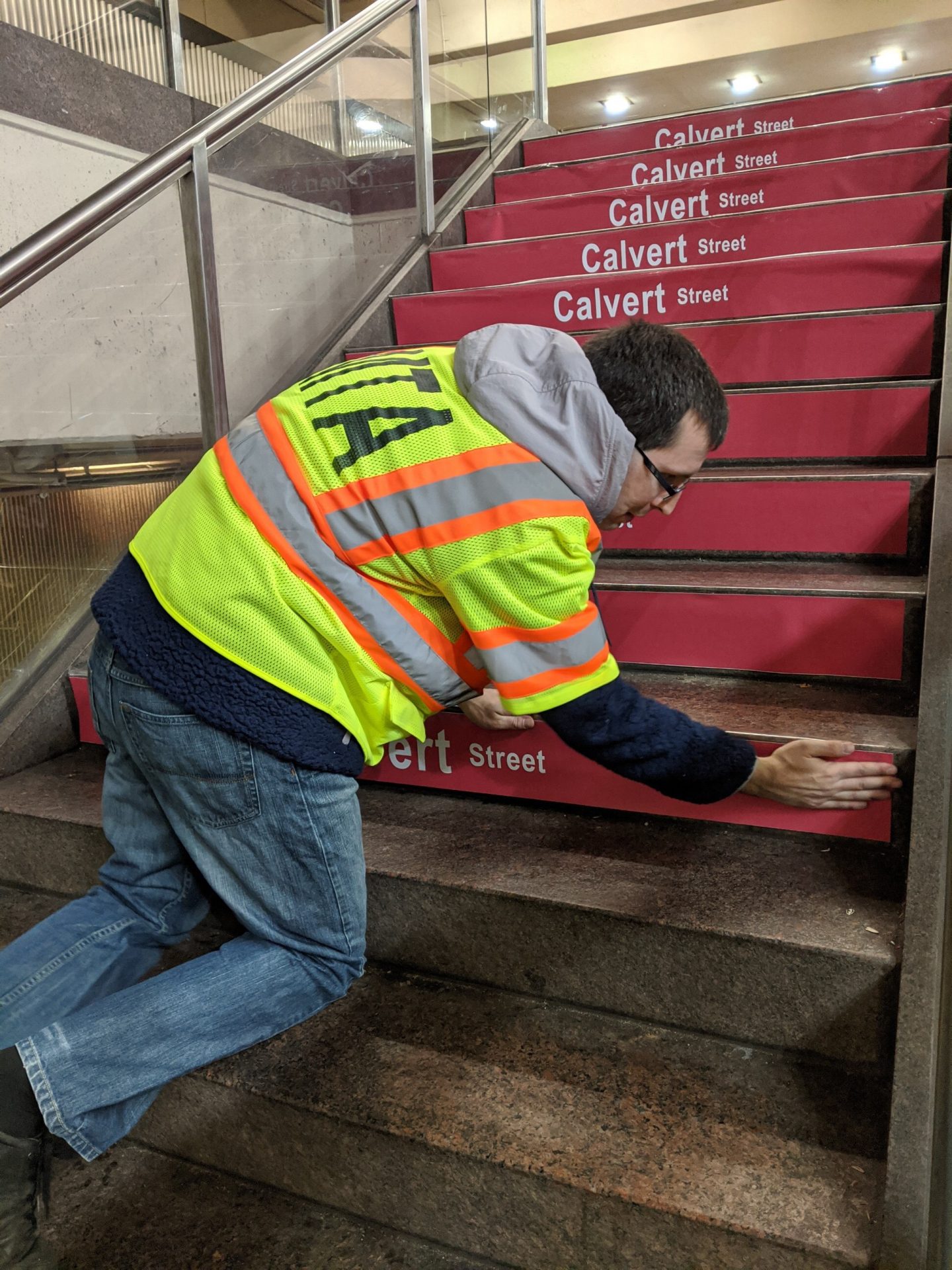Transit riders, focus group members, and transportation professionals attended the public workshop, and experienced the newly displayed way-finding and signage. A key aspect of the event was providing comments on the “first draft” of the prototypes, so that additional input can be used to develop even better guidance throughout the station, furthering the inclusionary nature of the work.
The improved way-finding was developed through MTA’s work as part of the Transit Planning 4 All project, sponsored by the Administration for Community Living, hosted by CTAA, in partnership with the National Association of Area Aging Agencies, the Institute for Community Inclusion, and DJB Evaluation. The project focuses on inclusionary planning practices, particularly in regards to people with disabilities and older adults. The project works to bring inclusionary practices into all aspects of the transportation planning process. What occurred at the Charles Street station was a prime example.
Members of the project’s steering committee of older adults and people with disabilities raised the issue that accessible way-finding could be improved in the subway station and MTA’s bus stops. The project organized focus groups of riders with disabilities (including those using mobility devices and those with visual impairments) and older adults to attend walk-throughs of the Charles Center station and subsequent meetings with a social design fellow. The input and recommendations of these groups were the basis of the developed prototypes on display.
The new way-finding signs on display were:
- Reimagined elevator signage –making clear what floor users are on & what floor interior buttons lead to
- Floor signage – indicating the location of subway doors for arriving trains
- Signage on step risers – indicating the street exit stairs are leading
- Signage around the station – pointing the direction of various street exits
- Floor signage – showing which direction trains are headed
The event made clear the value of inclusionary practices in the development of way-finding devices for the mobility of everyone. Arrows provide direction to a street exit in a busy station. Floor signage clears up where departing trains are headed.
Better way-finding results in improved mobility management, helping users get to where they need and want to go. Uncertainty as to what train on a platform to board or where the bus hub is located, could be the difference between a 2 hour wait for the next bus or making your connection.
The event made clear two important points. One, suitable way-finding makes for a better transit experience, allowing all users to more easily manage their mobility. The other, and what the Transit Planning for All program is all about, is that consistently engaging the people who are often marginalized in the transit planning process leads to better, more inclusive results. Making sure those who actually use and depend on transit are leading the change in a service, can only better it.
Take a look at what way-finding devices are on display in your community. Are bus stops clearly marked and noted? Is there signage available in braille for visually impaired users? Are there clear signs directing to the elevator at a transit hub or that a sidewalk route is accessible for those using a mobility device? These are signs & way-finding devices that can mean all the difference in someone being able to move as they need. Think about talking with your riders or customers about what’s working for them. If not, engage them in bettering what exists or implementing what could work. But clearly, with them taking the lead – see what might happen.





